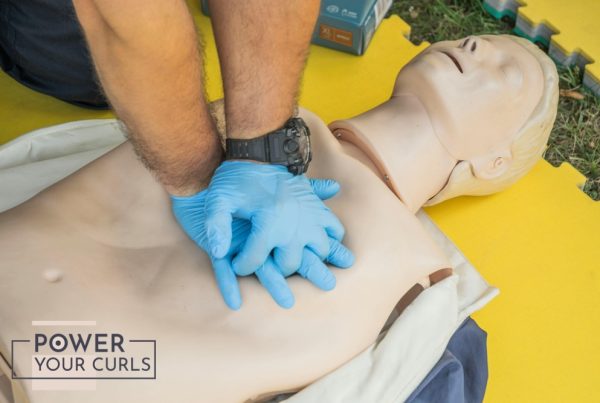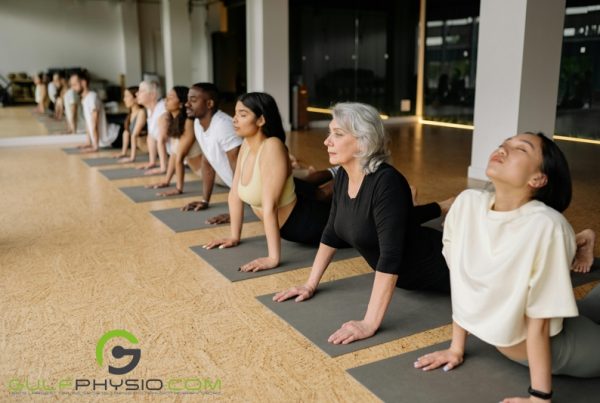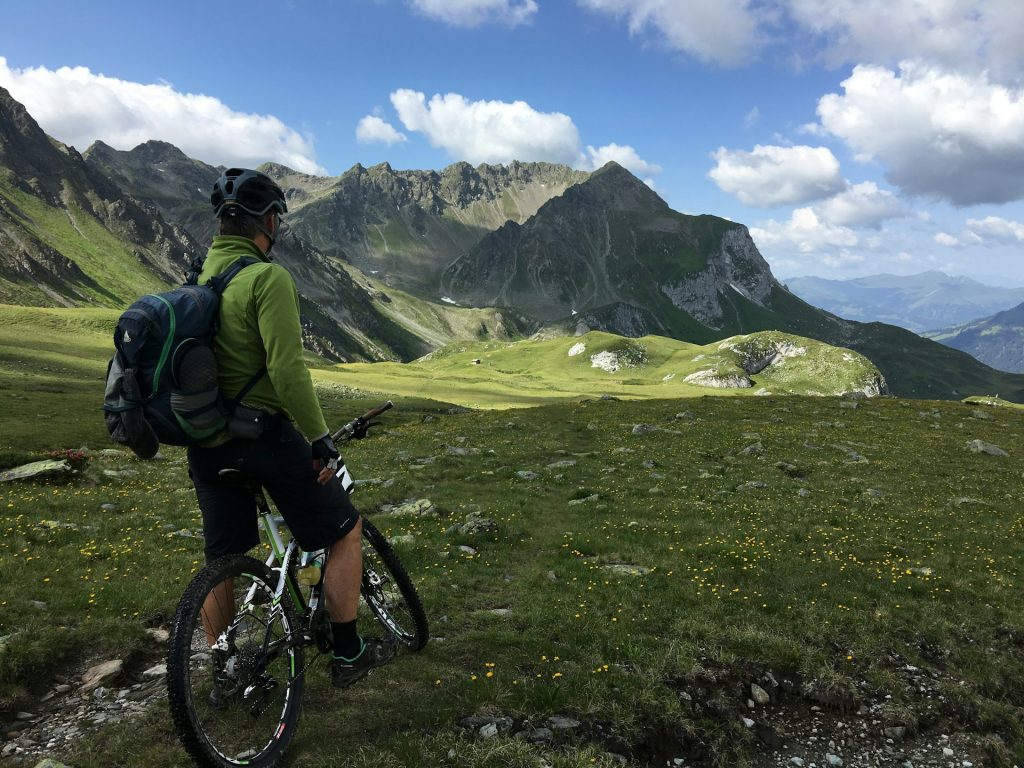
It’s that time of the year again for bikers in the UK, Europe, and the US. These locations have some of the most exciting and stunning biking routes such as Berwick, Tuscany, and Flume Trail, among others.
As bikers get hyped, going through these bike routes will not be easy. They will be greeted with fatigue, body and muscle pains, cramps, and mental exhaustion. Seeing the scenery may help but with a lack of preparation, bikers could face risks of injuries, accidents, and fatigue.
In this blog, bike enthusiasts will find helpful tips. GulfPhysio owner and physiotherapist Kieran Sheridan will share some of the most effective and easy stretches to improve bike performance and reduce injuries.
How do I prepare my body for cycling?
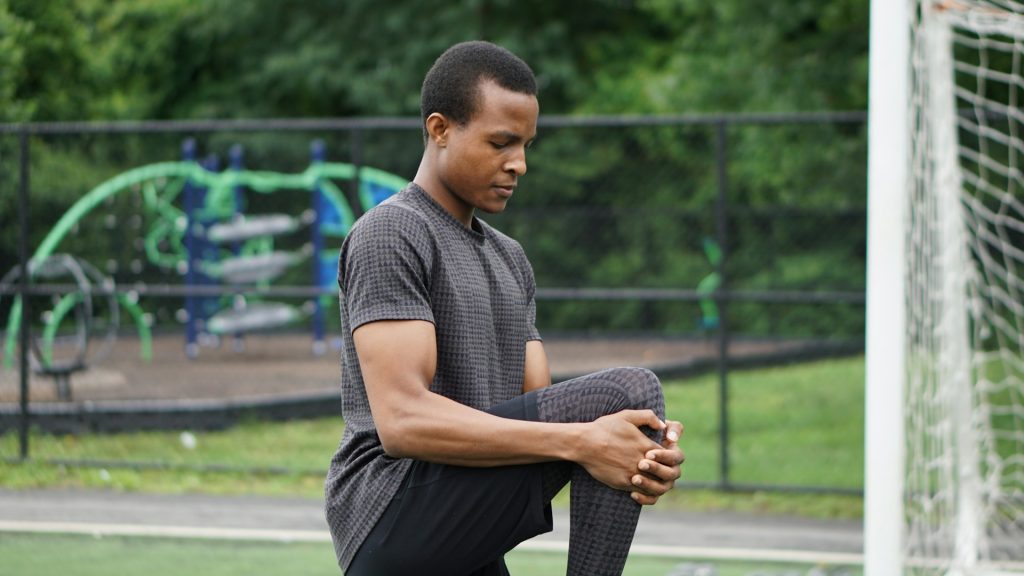
Preparing the body for cycling will require building stamina, increasing strength, improving balance, and increasing cardio. You need to train first to allow the body to withstand the high-impact exercise from biking.
You can start by warming yourself up through a 5 to 10-minute cycle trainer session or a light run. Inhale first during the initial exercise and exhale as you return to the starting position. You can also rest for 30 to 45 seconds at the end of each exercise.
Aside from warm-ups, Sheridan advised doing stretches before, after, and during cycling. This will allow the body to be prepared for the cardio exercise as well as prevent injuries.
Do I need to stretch before cycling?
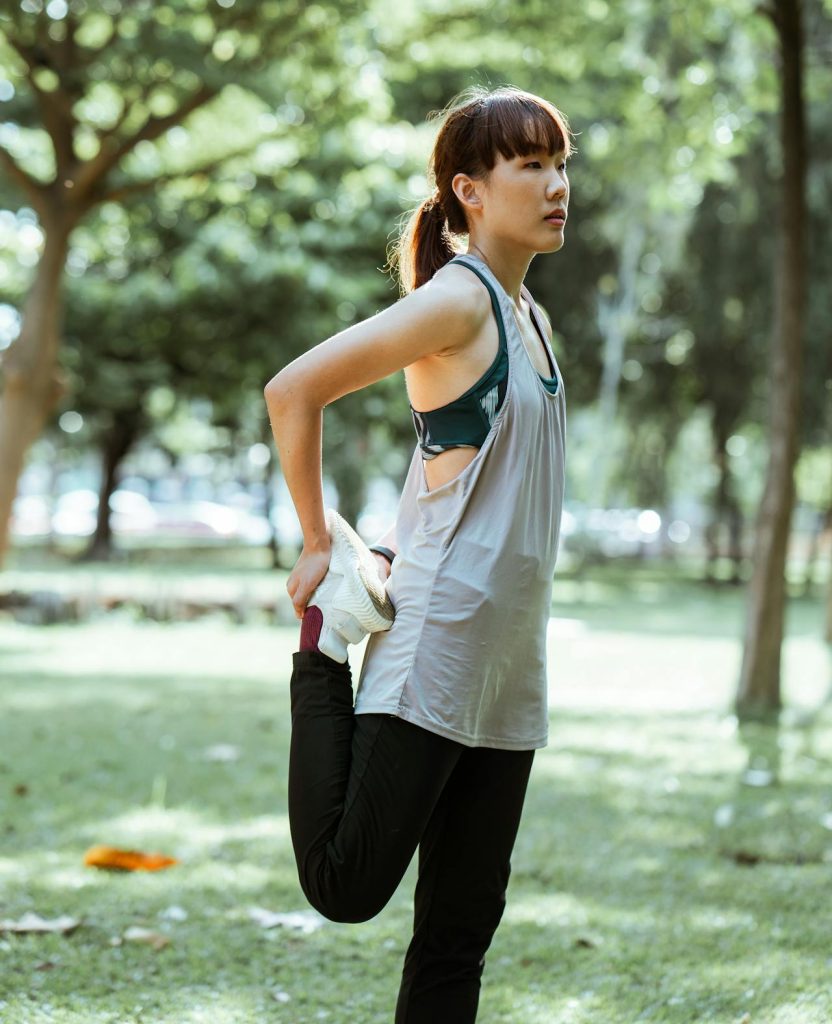
Stretching has been proven to help people improve their full range of motion and reduce the risk of cramps and body aches. This is due to the ability to move joints, which will improve flexibility as you stretch. A study found that static stretching before exercises can improve power, strength, and sprinting performance.
However, it also found that stretching before cycling can help with the body’s ability to breathe oxygen as they exercise. Results from the study indicated that static stretching produced an increase in submaximal VO2 or the maximum oxygen absorbed during physical activity.
Another study showed that athletes who require a great range of motion and speed in their sport may need long-term stretching to enhance their flexibility without adversely affecting their performance. Meanwhile, acute dynamic stretching may be effective in improving the range of motion slightly before their sports performance without negative effects.
Stretching can also improve other aspects of the performance. In fact, a study cited that stretching may have failed to improve bikers’ VO2 max but it positively affected the subjects’ biking performance. For example, it found that participants decreased time spent cycling and average oxygen consumption also increased.
Research also proved that training methods such as stretching are safe and help the muscles recover from fatigue and decrease the chance of injury during exercise. Stretching also helps with mental fatigue including stress and anxiety due to training.
With this promising scientific evidence, it is clear that stretching is beneficial for bikers who would go on long routes.
Here are some stretches Sheridan advised before biking:
Downward facing dog
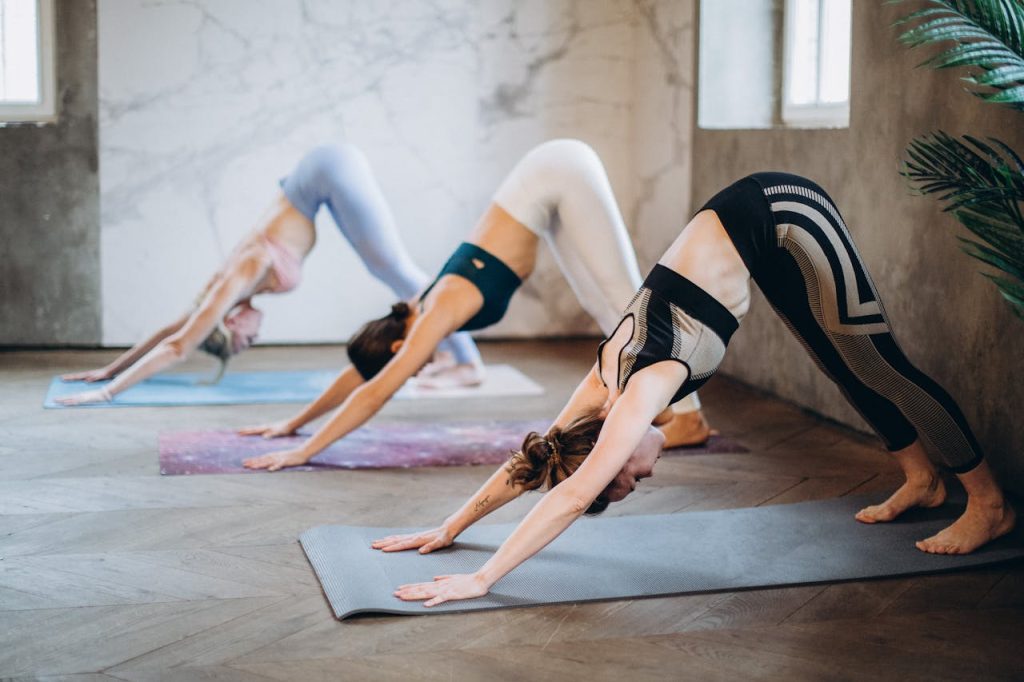
First, keep the toes tucked under and lift the knees from the floor. Next, straighten the legs and raise the bottom while moving onto the feet and working to press the heels into the floor. Push your shoulders so the bottom is pushed back and the stretch can be felt through the back and hamstrings. Do this again for a few times and make sure to breathe in and out for five times.
Hip and Lower Back Stretch
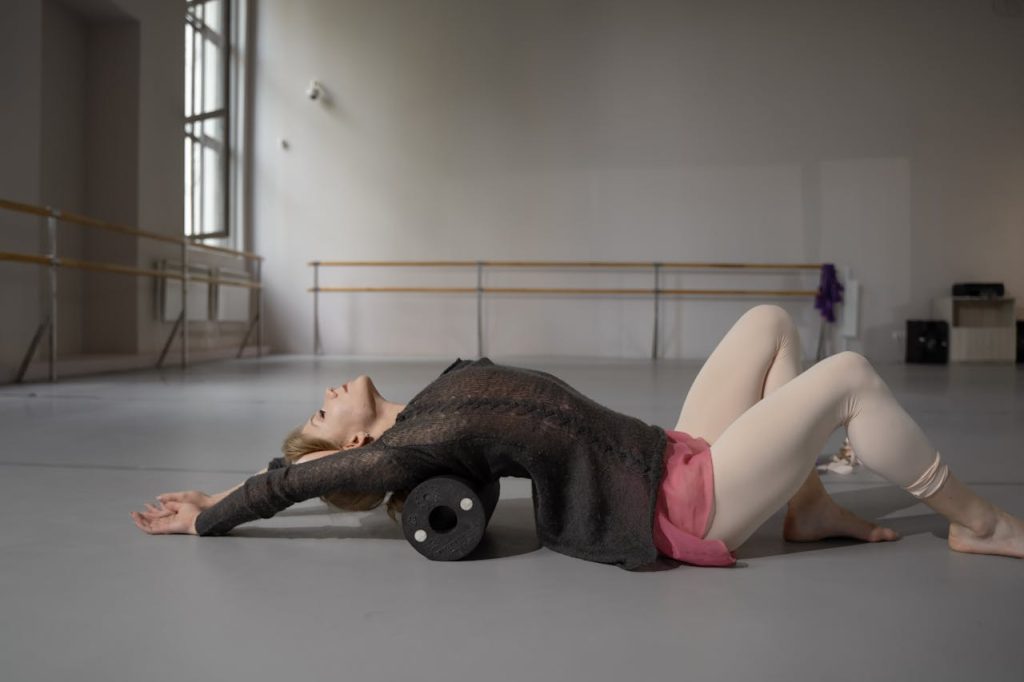
This is another helpful stretch that you can try because it will help stretch the hips, groin, and lower back muscles.
Start by doing a forward lunge position with the right leg forward. Drop the left knee to the ground and place the right elbow on the inside of the right knee. Press the right elbow gently into the right knee and twist the torso to the left. Afterwards, reach the left arm behind you until you feel a slight stretch in the lower back and right groin. Do this stretch for 20 to 30 seconds and then release. Do this again for the opposite leg.
Revolved belly pose
Another good pre-bike stretch is the revolved belly pose. To do this, stretch both of your arms outwards along the floor to open the space between the shoulder blades. As this happens, the lower back slowly releases and straightens the legs. You eventually have the toes touch the hand nearest them.
How do you stretch after cycling?
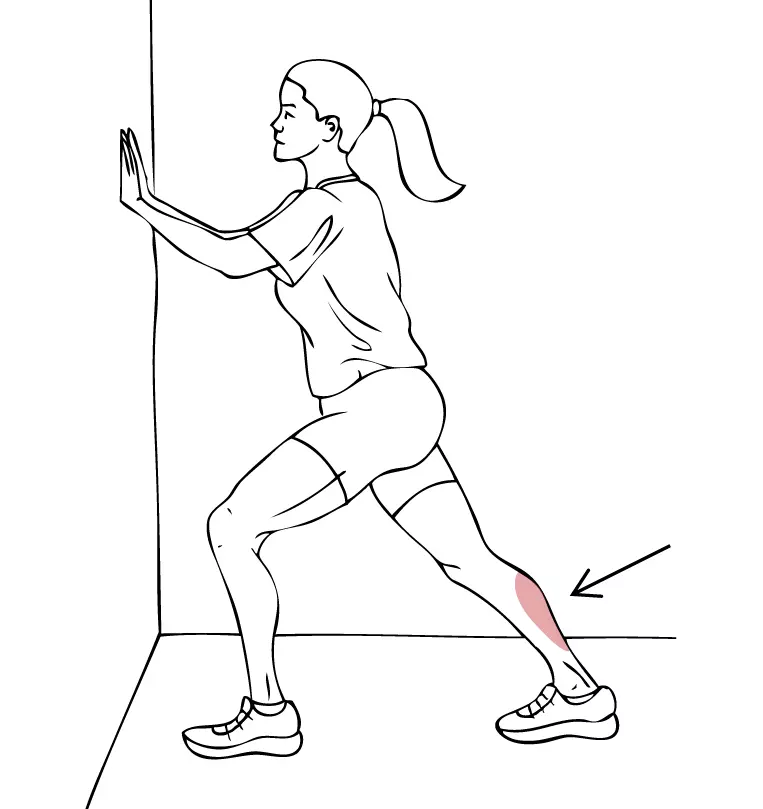
Further studies showed that stretching helped enhance quad flexibility and knee joint motion, which are some of the most important muscles for cycling. Lower risk of muscle/tendon injury and low back pain were also reported for people who stretch when doing an exercise, according to a study.
The American Council on Exercise also underscored the importance of cooldown stretching because of benefits such as improving flexibility, enhancing mental well-being, and allowing recovery from high-impact exercises.
Here are some post-stretching routines after a biking exercise:
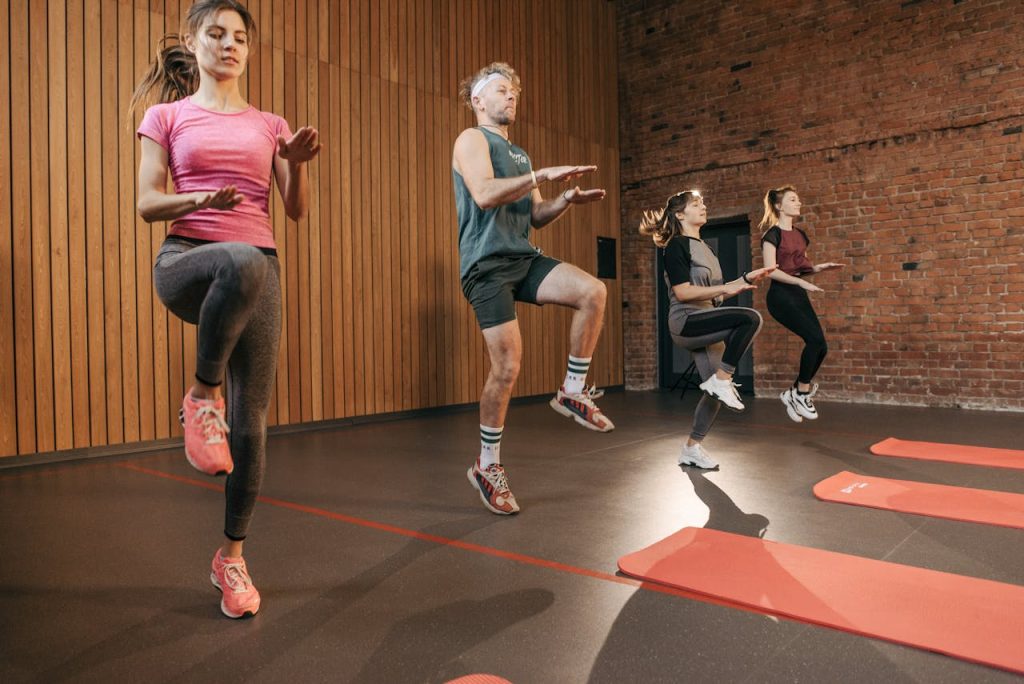
High Knees
Cycling can mostly affect glutes, hips, and hamstrings. After a bike ride, you will most likely experience pain and tension from these muscle groups. To prevent this, you can do a high knee stretch.
Start with standing and then lifting one bent knee at a time until you feel a stretch without pain. Slowly increase the pace and start hopping from one leg to another, still alternating knees up. Do this for 30 seconds to 1 minute.
Shoulder reach
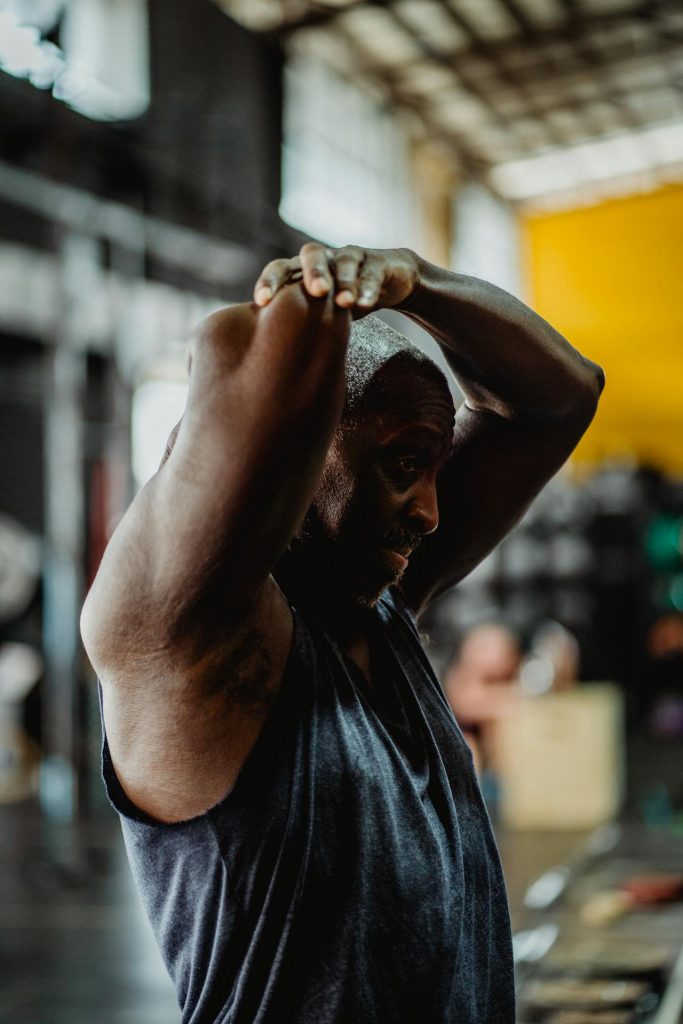
You also need to stretch your shoulders because the latissimus dorsi or lats are usually affected by cycling. According to Sheridan, the lats affect the shoulders down to the back.
This exercise will help you avoid complications in this muscle.
First, stand up and extend your arms above the head. Start reaching the fingertips upwards and keep the biceps next to the ears. Shrug the shoulders up and down. Begin to do this for 30 seconds.
Spinal twist stretch
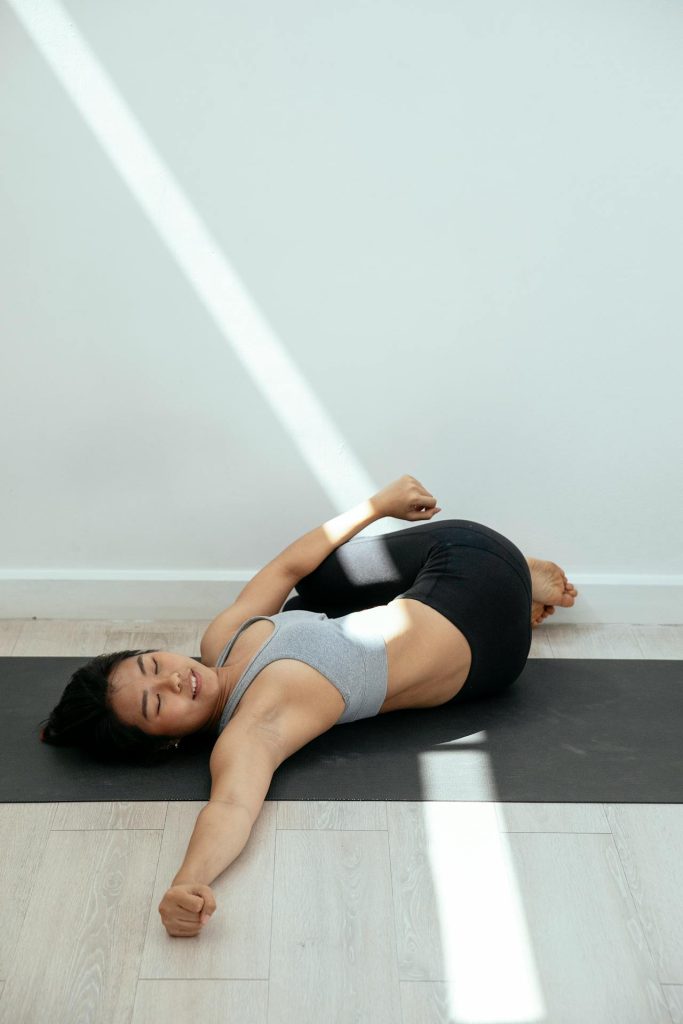
Start by sitting on the floor with both legs extended. Bend the right knee over the left leg and place the right foot on the ground. Finish getting into position by twisting the body until you can position the left elbow on your right knee. Do this for 20 to 30 seconds. Then, switch to the opposite side.
How do you stretch during cycling?

Taking breaks during an exercise such as biking is very important to give time for hydration, prevent injuries, and allow the body to stretch in between cycling. In fact, a study from Japan showed that taking breaks in between exercises helps in metabolism.
The study’s conclusion showed that having a resting period instead of continuous exercise will be more effective in burning fat.
Sheridan advised stretching or doing light walking for 5 to 15 minutes as a break from cycling.
Here are some stretching techniques bikers can do while taking a short break. All these stretches can be done with the bike offering as a support.
Spinal twist

To do this, stand over your saddle or while you are riding the bike. Then, place the right hand on the handlebar and stretch the left arm. If you are doing this while on a break, look over the left shoulder. Hold for 2-3 breaths. If you are doing this while riding the bike, keep your gaze forward, taking 2-3 breaths with your arm extended. Repeat this stretch on the other side.
Forward Fold
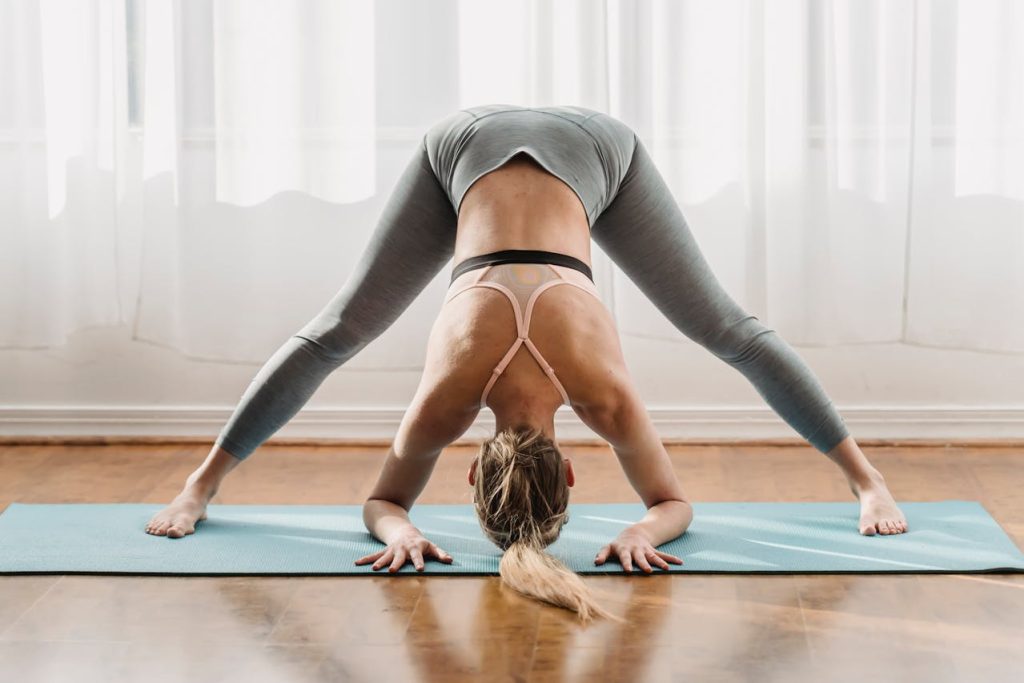
To begin, stand parallel to the bike, then, step the feet 3-4 feet apart. Afterwards, hold the bike with both hands, one hand on the frame and the other on the handlebar, with hands shoulder-width apart. Then, slowly fold forward, joining at the hips to where you feel a stretch. Do this for 30 seconds or 2-3 breaths, release, and then repeat 2 times.
Standing Figure Four Stretch
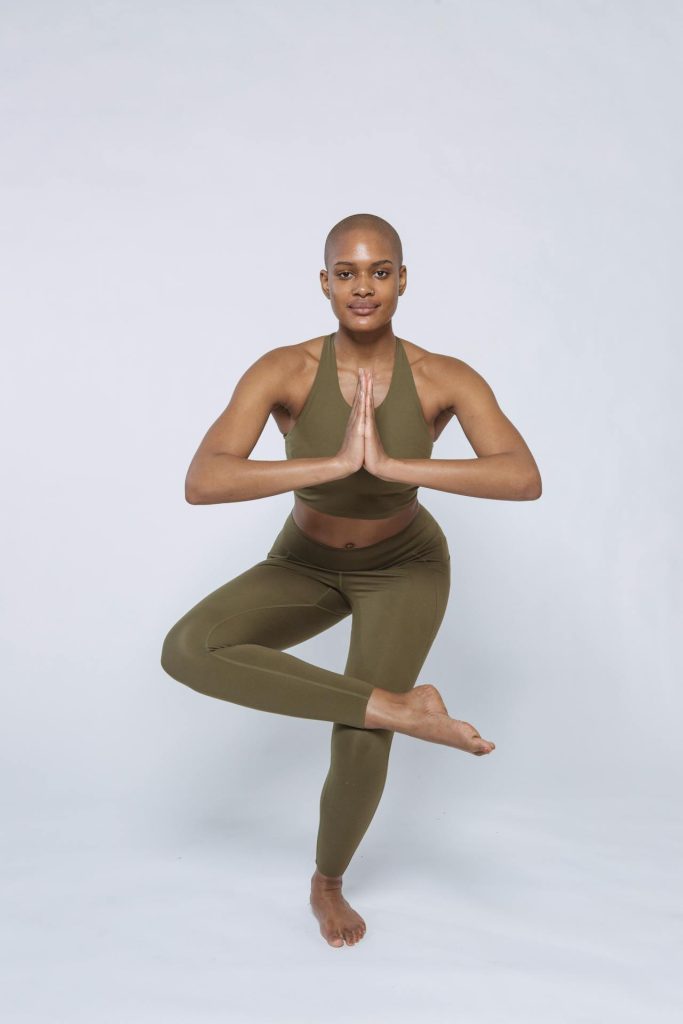
Start by standing to the left side of the bike, with the feet hip-width apart, place the left hand on the handlebar with the right hand on the saddle. As you balance on the left leg, bring the right leg up, crossing the right ankle over the left knee. Sit back and hold while looking forward. Hold this position for 15-30 seconds. Repeat on the opposite side.
What safety gear do you need for biking?

Although riding a motorcycle is more dangerous than biking, Sheridan advised cyclists to practice safety precautions such as wearing some safety gear.
The first and most basic safety gear is wearing a helmet. Other critics mention bicycle helmets are not useful. However, numerous studies prove otherwise.
A study mentioned that the evidence for the effectiveness of helmets is strong while the evidence for a lack of protection is weak. Another study argued that using helmets reduced the odds of head injury.
According to the Cleveland Clinic, helmets should be properly worn to avoid head injuries in the event of a collision. It also cautioned against using expired bike helmets because they could be worn out, have cracks, or may already have missing parts, which could impede biker’s safety.
Sheridan advised using mountain bike helmets because they offer more coverage and even have an adjustable visor. You can also use road bike helmets which are often lightweight and have improved ventilation.

Ensure that you pack a water bottle attached to your bike. This will help you to stay hydrated and avoid feeling fatigued or dehydrated.
Another safety gear is shatter-resistant eyewear. This will shield you from bugs, dust, and other objects that can block your vision. Protective eyewear will also protect you from the sun and high beams from cars, which can distract your eyes and eventually cause accidents.
Aside from glasses, gloves are also helpful in protecting bikers from road rash. It will also protect riders’ hands in case of a collision as bikers would usually use their hands to break their fall.
Lastly, reflectors and lights are also effective in keeping bikers safe because they can help the biker become more visible to other riders. This will be helpful when bikers suddenly change their lanes.

